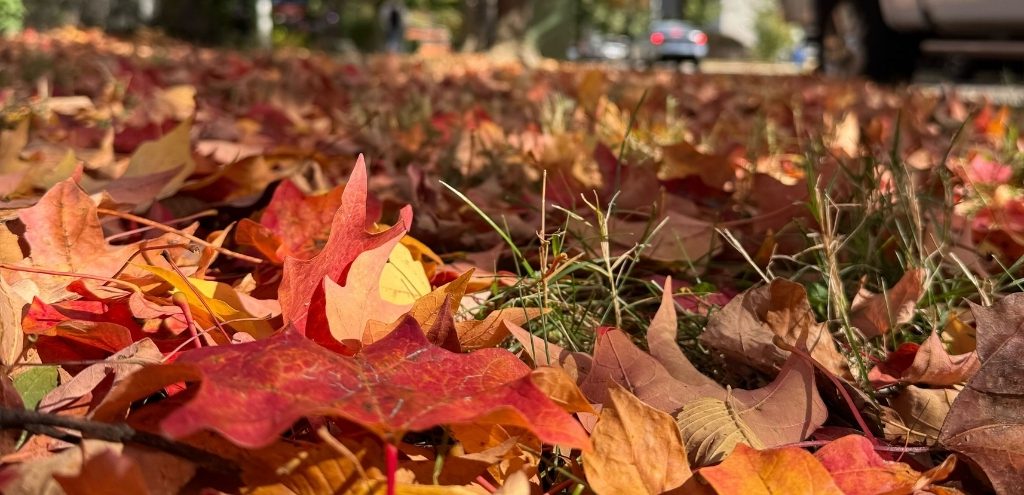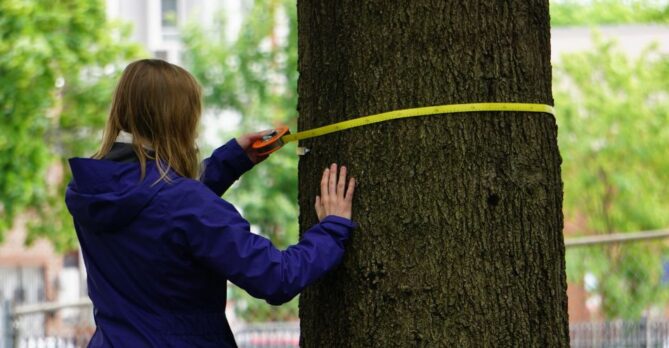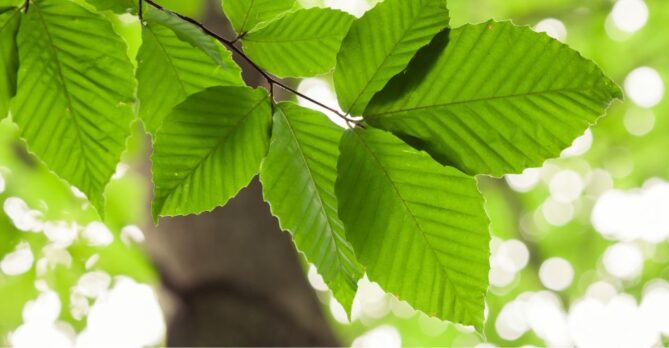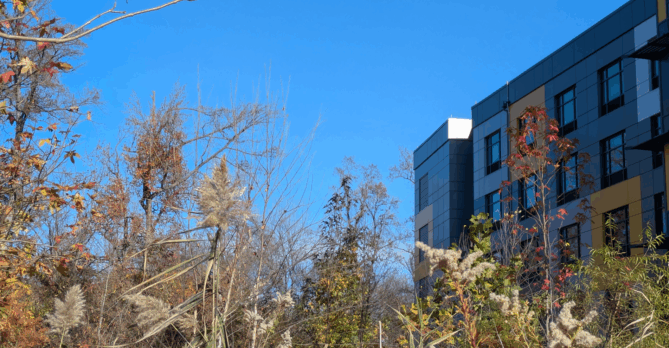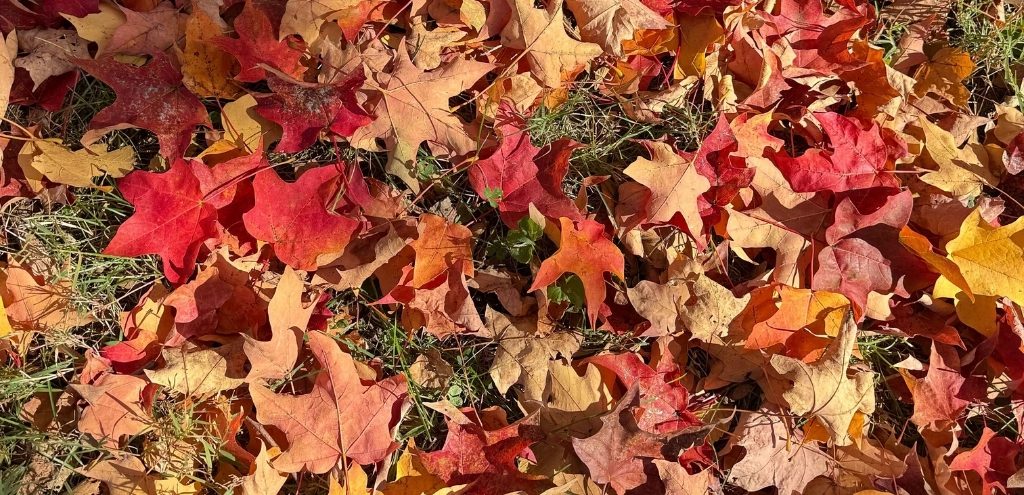
While October is known for being all things spooky season, it also has a lesser-known dedication: Leave the Leaves Month. You read that right – ditch those rakes, throw caution to the wind, and let your trees’ leaves coat your lawn in striking autumnal colors!
And if your neighbors get up in arms over your fallen leaves, there’s no need to fret. Read on to learn how and why letting nature do its work is a surefire way to help your lawn, the local environment, and your back pain.
Nature’s Mulch: A Key Part of Our Ecosystem
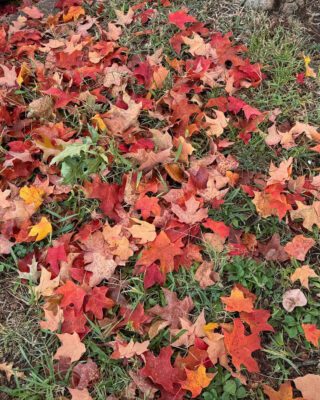
While it’s easy to think of a tree’s fallen leaves as a pesky chore or as a feature of a messy lawn, it’s time to reframe them for what they really are: nature’s mulch. As leaves decompose, essential materials such as carbon, potassium, and phosphorus are released – nutrients that were borrowed during a tree’s growing season that are then recycled back into the soil.
A coat of leaves on the ground also helps keep soil moist and cool, reducing soil evaporation and insulating the ground from extreme temperature changes. This blanket also serves as a weed suppressant, blocking sunlight from reaching weed seeds and thereby reducing competition for a plant’s resources.
Helping your soil health doesn’t just affect your yard – it also impacts your greater community.
Think of Your Neighbors – Big and Small
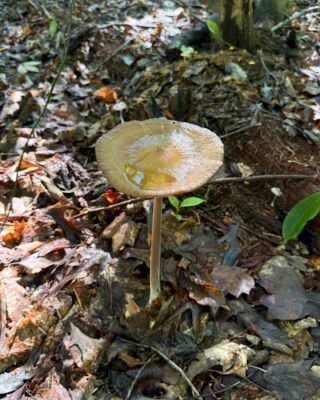
Terms such as “leaf litter,” “yard debris,” and “detritus” lend people to believe that fallen leaves are piles of stagnant, unliving waste. However, this couldn’t be further from the truth: fallen leaves are incredibly valuable habitats for countless living organisms. From microbes to macrofauna, these leaves are brimming with biodiversity, complex food webs, and innumerable ecological processes.
Fungi and bacteria lead the way for decomposition, breaking down the leaves into those critical nutrients for plants to reuse. Invertebrates such as snails, worms, and millipedes work to shred the fallen leaves into smaller fragments as they go about arboreal meals, contributing to the leaves’ nutrient recycling. And the buffet isn’t just for smaller critters – birds, frogs, and other larger animals pick through fallen leaves seeking out valuable food sources.
These fallen leaves also provide essential habitats for countless insect species. Butterflies, moths, and other organisms spend a portion of their lives amongst the fallen leaves resting upon the ground. If these leaves are shredded up, removed, or composted, these important species fail to reemerge in the spring. In other words, eliminating leaves decreases biodiversity while also removing the crucial ecological services these organisms provide, including pest control.
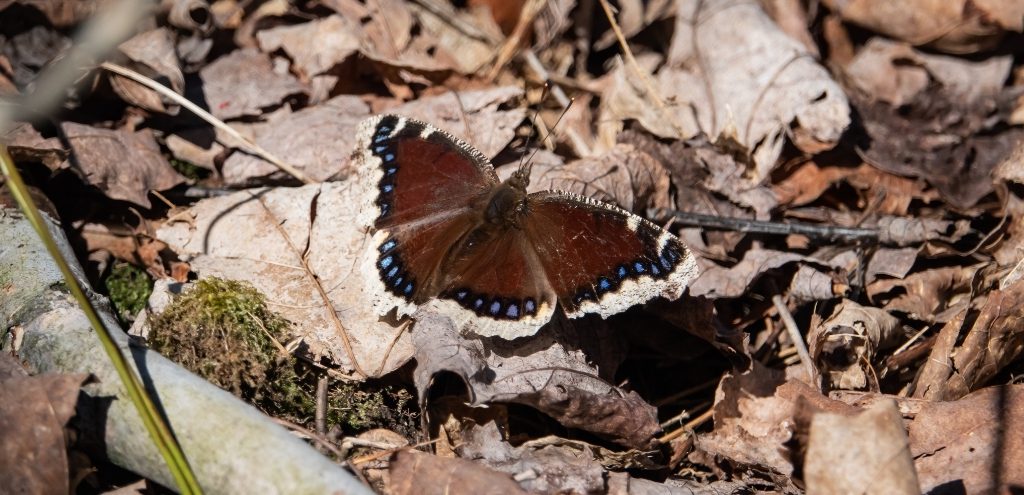
When we clear everything away, we’re not just “tidying up” — we’re removing habitats and food systems that keep our ecosystems balanced.
What About the Waste?
Of course, there may be times when you decide to intervene. In urban settings like DC, leaves can pile up on sidewalks or in our streets, creating a potential slip hazard for pedestrians and cyclists. Fortunately, there are some ways you can maximize the benefits of leaving the leaves while working in a built environment.
If leaves pile up on your sidewalk or driveway, you can collect and disperse them over your lawn, garden beds, and other grassy areas. Try to create a shallow coating of leaves: thick layers of leaves can block light, stunt grass growth, and prevent insects from successfully emerging.
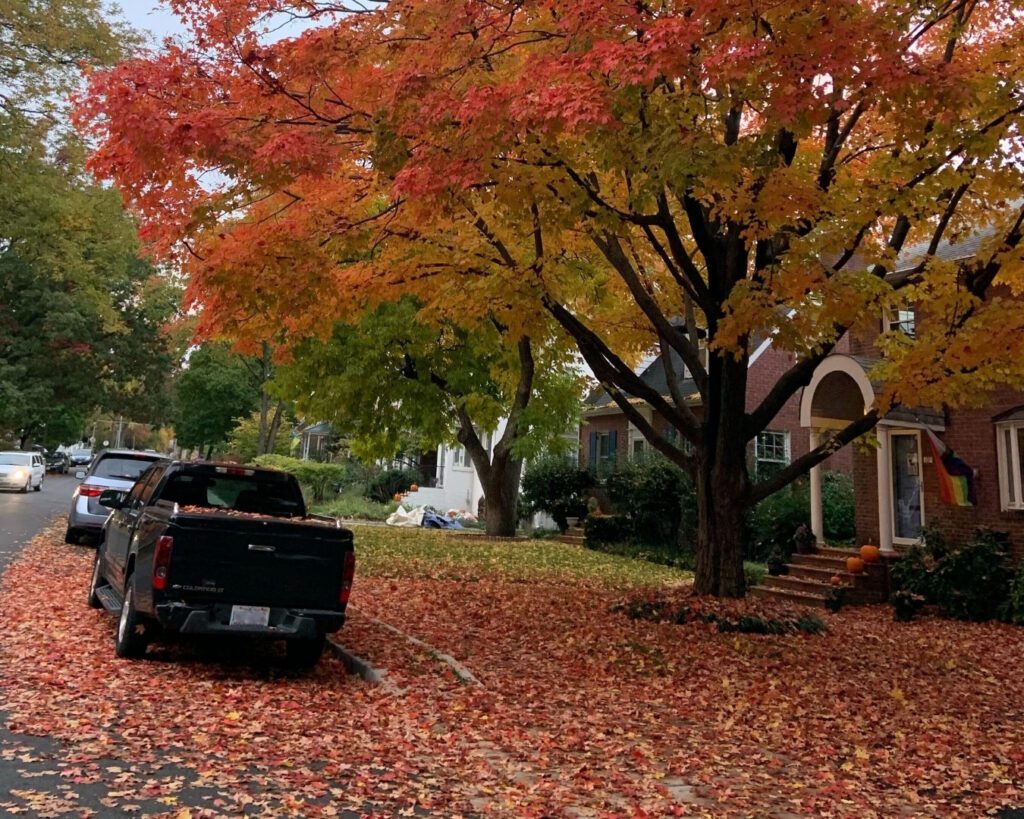
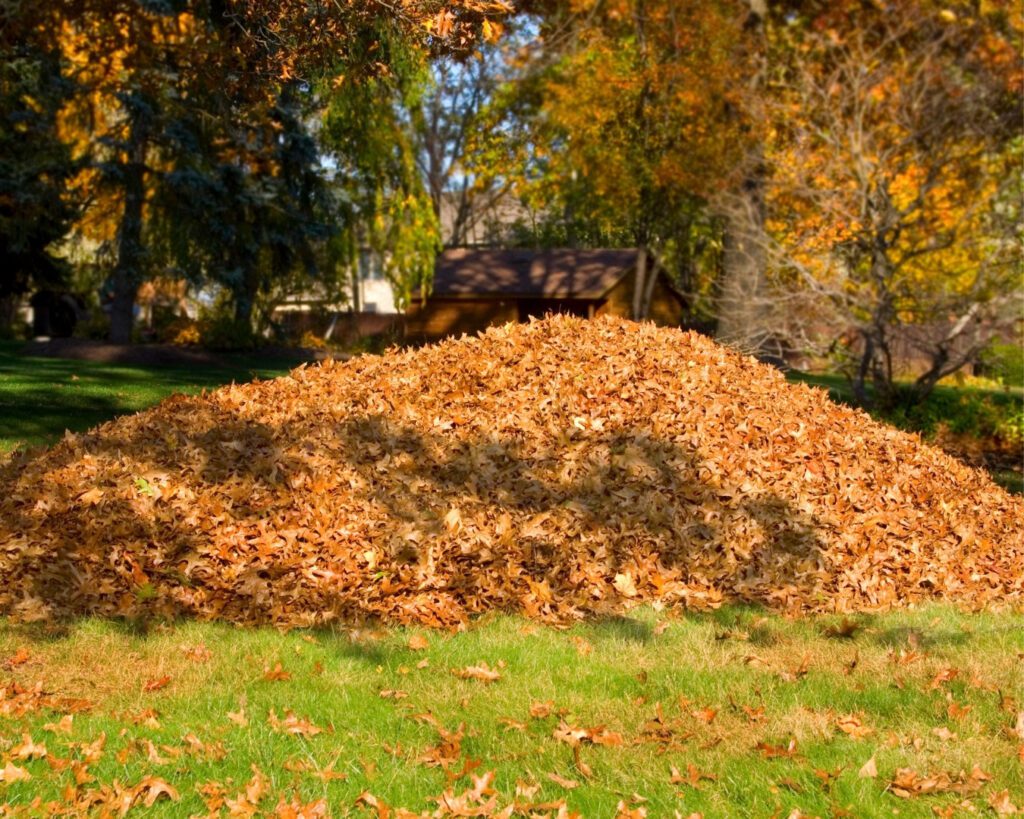
If need be, composting is an option if you find yourself with an abundance of fallen leaves. While composting can negatively alter the habitats for the insects, it still utilizes the nutrients that the leaves provide, creating mulch that can be reapplied to lawns or garden beds. Depending on your municipality, these leaves can also be composted by your city or town.
Whatever you do, steer clear of putting your leaves into plastic trash bags. The EPA estimates that leaves and other yard debris account for 35.4 million tons of waste per year – while much of it is composted, some still finds its way to landfills. Avoid this trip to the landfill by following local guidelines and using paper bags specifically made for yard waste.
Leave the Leaves, Love the Trees
It’s important to remember that trees have been dropping leaves for millions of years, where they’ve helped shape and form countless ecological processes. From keeping soil moist, cool, and nutrient-dense, to providing homes and food for countless organisms, leaving the leaves is an easy, impactful strategy for helping your soil and local ecosystems.
Sometimes, we simply need to let nature do its work!
